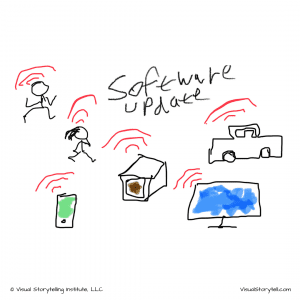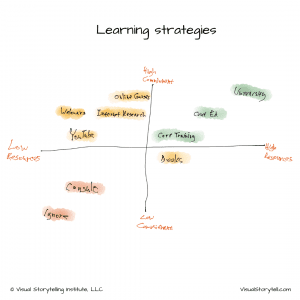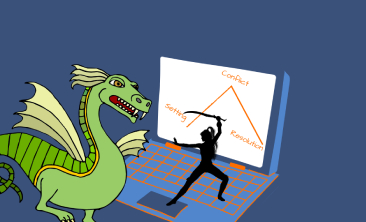
How do you “software-update” your skills?
How do you “software-update” your skills? https://www.visualstorytell.com/wp-content/uploads/2020/10/How-Do-You-22Software-Update22-Your-Skills_Thumb.jpg 366 222 Shlomi Ron Shlomi Ron https://secure.gravatar.com/avatar/995c0cf093380b90c7704fda398c9addf4e5c605afbc92af5c3f01f67d65aa41?s=96&d=mm&r=g- Shlomi Ron
- no comments
How do you keep your skills up to date?
Or as I’d like to call it “software-update” your skills 🙂
Lately, I’ve been thinking about that.
In a world where access to information about any topic is just a click away, you get on one hand convenience, but with the emergence of social media you also get disinformation and misinformation.
But that’s a whole different discussion and is not where I’m headed here.
Before the Internet age, we used to pay extra for software updates so we could upgrade from say, Photoshop 2.0 to 3.0 in separate 3.5” floppy disks and later CD-ROMs, remember?
Nowadays, it seems like any WiFi-enabled device that is boasting the adjective “smart” receives these magic software updates that make changes to its features and occasionally delights users with a new interface that almost feels like you’ve just won a video game round and being awarded with a fresh new level.
Indeed, every unexpected software update that lands on your device “is like a box of chocolates, you never know what you’re going to get.”
The list runs from the obvious to new and unexpected entrants: smart phones, computers, voice activated virtual assistants, home sound systems, ovens, refrigerators, ACs, TVs, and even electric cars (think of Tesla which is nothing but a smart phone on wheels).

How do you “software-update” your visual storytelling skills?
But how do people “software-update” their skills?
The way I see it, acquiring new skills is a function of two drivers:
1. Low vs. High Commitment. That means, what is the pain’s burning level to close a learning gap.
2. Low vs. High Resources that include money and time. For simplicity, I group time and money together even though they could carry different levels.
From this four quadrant graph you can see how different “software update” strategies map out:
 When you have low resources and commitment, at the lowest level you ignore the problem and risk the consequences of being left behind. Next level up, you may consult a friend about the topic and try to fix the problem riding on your friend’s advice or hack.
When you have low resources and commitment, at the lowest level you ignore the problem and risk the consequences of being left behind. Next level up, you may consult a friend about the topic and try to fix the problem riding on your friend’s advice or hack.
Still on the low resources end but with a bit of more commitment, you may start watching How To YouTube videos (I often do it for my baking recipes).
Next, is running a deep dive Internet research that requires you to compare and contrast various sources, document your findings and then analyze them for implications to your business. More effort.
Close by are the Free Webinars or virtual summits that are flooding the Zoom waves. These are great platforms to get exposure to thought leaders and capture a few of their insights.
Topping this quadrant, are online courses that represent folks that recognize a critical learning gap and commit to training online, attentively and affordably.
On the lowest end of High Resources with Medium Commitment, I’d say you can find folks that like to buy business books. These could be tech detox people or simply people who enjoy reading while getting a screen break.
And lastly, on High Resources + High Commitment, you’ll find corporate training programs (your HR or CMO is requiring you to take this training program as part of onboarding or periodical professional development). Enrolling in Continuing Education evening program is the next step to learn specific skills. And lastly, earning a full 4-year academic degree is naturally sitting at the top. Any graduate degrees will increase your learning scope and improve your learning and research skills.
True, where are you on your career stage also plays a role in deciding which learning route you choose.
Early on, you tend to focus on completing an academic degree (entry ticket to the job market) and then move around the other quadrants based on resource and commitment levels.
“75 million old jobs will go away by 2022, and 135 million new jobs will be created because of new technologies” (Knowledge@Wharton).
If Covid has given us enough of a preview, the future workplace will demand people that can easily adapt to an ever changing business landscape.
One thing is clear.
Regardless of how you “software-update” your skills, you’ll thrive if you’re committed to a lifelong learning.
Need help with your visual storytelling? Let’s chat!
- Posted In:
- Story Making
- Story Visualizing
- Visual Storytelling
Shlomi Ron
Shlomi Ron is the founder and CEO of the Visual Storytelling Institute, a Miami-based think tank with a mission to bring the gospel of visual storytelling from the world of art to more human-centric and purpose-driven marketing. A digital marketing veteran with over 20 years of experience working both on the agency and brand sides for Fortune 100/500 brands such as Nokia, IBM, and American Express. He started VSI to combine his marketing expertise with his passion for visual stories stemming from his interests in classic Italian cinema and managing the estate of video art pioneer, Buky Schwartz. At VSI, he helps brands rise above the communication noise through visual storytelling consulting, training, and thought leadership. Select clients include Estée Lauder, Microsoft, and Cable & Wireless – to name a few. He currently teaches Brand Storytelling at the University of Miami’s Business School. Thought leader and speaker at key marketing conferences. He is also the host of the Visual Storytelling Today podcast, which ranks in the top 10 best business storytelling podcasts on the Web. His book: Total Acuity: Tales with Marketing Morals to Help You Create Richer Visual Brand Stories. Outside work, he is a nascent bread baker, The Moth fan, and longtime fedora wearer likely to jive with his classic Italian cinema interest.
All stories by: Shlomi RonYou might also like
This site uses Akismet to reduce spam. Learn how your comment data is processed.



Leave a Reply